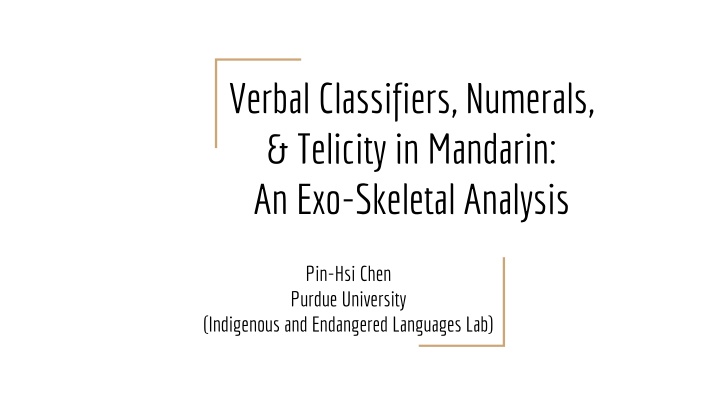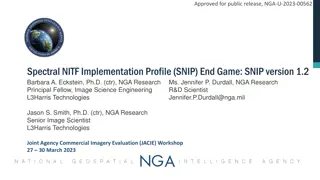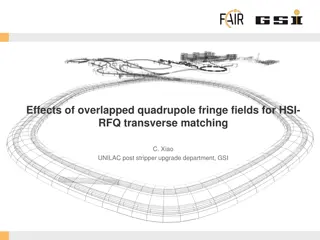
Mandarin Verbal Classifiers, Numerals, and Telicity
Explore the relationship between verbal classifiers, numerals, and telicity in Mandarin, along with formal representations and the Exo-Skeletal Model. Understand telicity's origins, the functions of verbal classifiers, and how they contribute to telic interpretations. Dive into empirical evidence and draw conclusions on these linguistic elements.
Download Presentation

Please find below an Image/Link to download the presentation.
The content on the website is provided AS IS for your information and personal use only. It may not be sold, licensed, or shared on other websites without obtaining consent from the author. If you encounter any issues during the download, it is possible that the publisher has removed the file from their server.
You are allowed to download the files provided on this website for personal or commercial use, subject to the condition that they are used lawfully. All files are the property of their respective owners.
The content on the website is provided AS IS for your information and personal use only. It may not be sold, licensed, or shared on other websites without obtaining consent from the author.
E N D
Presentation Transcript
Verbal Classifiers, Numerals, & Telicity in Mandarin: An Exo-Skeletal Analysis Pin-Hsi Chen Purdue University (Indigenous and Endangered Languages Lab)
Main Questions 1) What is the relation between verbal classifier, numeral, and telicity in Mandarin? 2) How do we represent this relation formally? Ta (zai san miao nei) qiao zhuo-zi liang 3rd (be-at three second inside) knock table two S/he knocked the table twice (in three seconds). xia. CLv-TIME
Outline 1) What is telicity and where does it come from? 2) What are the functions of a verbal classifier? 3) The Exo-Skeletal Model (Borer, 2005) 4) Applying the model to verbal classifier construction 5) Empirical evidence 6) Conclusions
Telicity (Quantity Event) X is quantity if X is non-cumulative or non-divisive. a cup of water => quantity water => non-quantity The bird flew to the tree top. => quantity (telic) The bird flew. => non-quantity (atelic)
Telicity (Quantity Event) Telic events are compatible with in X time. Atelic events are compatible with for X time. The bird flew to the tree top in five minutes / *for five minutes. The bird flew for five minutes / *in five minutes.
Where does telicity come from? 1) A quantity object (Verkuyl s Generalization) (Verkuyl, 1972): I drank a cup of water in five minutes. 1) A verb or preposition that denotes an endpoint (Chen et al., in press): The bird flew to the tree top in five minutes. 1) A numeral or quantifier: He blinked three times in five seconds.
Functions of Verbal Classifiers 1) Divide an event into countable sub-events. 2) License a numeral that counts the number of sub-events. 3) The numeral in turn gives rise to a telic interpretation. Ta (zai san miao nei) qiao zhuo-zi liang 3rd (be-at three second inside) knock table two S/he knocked the table twice (in three seconds). xia. CLv-TIME
The Exo-Skeletal Model (Borer, 2005) 1) Functional projections (TP, DP, AspP, QP, etc.) have empty heads. 2) Certain linguistic elements can provide semantic content (assign range) to an empty head. They can be a morpheme, phrase, or feature.
The Exo-Skeletal Model 3) One empty head cannot be assigned range by more than one element at the same time. * this my car
The Exo-Skeletal Model 4) AspQP is the functional projection responsible for telicity. It also assigns accusative case to an object (Borer, 2005b).
The Exo-Skeletal Model 5) If an event is atelic, there is no AspQP. Instead, the object is introduced by a functional projection that assigns partitive case (Borer, 2005b).
Applying the Model 1) A verbal classifier phrase (CLvP) projects, assigned range by a verbal classifier. Qiao Knock Knock time xia CLv-TIME
Applying the Model 2) A numeral counts the sub-events and assigns range to AspQ. Qiao Knock Knock two times liang two xia CLv-TIME
Applying the Model 3) If there is an object, it is introduced by FP. Qiao Knock Knock the table two times zhuo-zi liang tabel xia CLv-TIME two
Applying the Model 4) Additional layers Ta. qiao 3rd. knock table S/he knocks the table two times zhuo-zi liang xia two CLv-TIME
Empirical Evidence -Absence of Quantity Object Telicity does not come from a quantity object in verbal classifier construction. i) Ta zai san miao nei qiao *(liang 3rd be-at three second inside knock two S/he knocked twice in three seconds. xia). CLv-TIME ii) Ta zai san miao nei xiao *(liang 3rd be-at three second inside laugh two S/he laughed twice in three seconds. sheng.) CLv-SOUND
Empirical Evidence -Motion Predicates (i) Mu-zhuang wood-peg The wooden peg was hammered into the cube. bei BEI qiao hammer dao arrive fang-kuai cube li. inside (ii) Mu-zhuang wood-peg The wooden peg was hammered four times (in a row). bei BEI qiao hammer four si xia. CL-TIME (iii) *Mu-zhuang bei Wood-peg BEI hammer The wooden peg was hammered four times (in a row) into the cube. qiao si four xia CL-TIME arrive dao fang-kuai cube li. inside
Empirical Evidence -Finnish (i) Anne rakensi talon. Anne built Anne built a/the house. (telic) house-ACC (i) Anne Anne Anne was building a/the house. (atelic) rakensi taloa. built house-PRT
Empirical Evidence -Finnish Koputin knocked.1st.SG door-PRT twice I knocked the door twice. ovea kahdesti.
Conclusions 1) A verbal classifier divides an event into countable sub-events, thereby licensing the presence of a numeral. 2) A numeral specifies the number of sub-events, thereby making the whole event quantity (telic).
References Borer, Hagit. (2005a). In Name Only: Structuring Sense, Vol. 1. Oxford: Oxford University Press. Borer, Hagit. (2005b). The Normal Course of Events: Structuring Sense, Vol. 2. Oxford: Oxford University Press. Borer, Hagit. (2013). Taking Form: Structuring Sense, Vol. 3. Oxford: Oxford University Press. Huang, James, Audrey Li, & Yafei Li (2009). The Syntax of Chinese. New York: Cambridge University Press. Li, XuPing. (2013). Numeral Classifiers in Chinese: The Syntax-Semantics Interface. Berlin/Boston: Walter de Gruyter GmbH. Ramchand, Gillian. (2008). Verb Meaning and the Lexicon: A First Phase Syntax. New York: Cambridge University Press. Verkuyl, Henk J. (1972). On the Compositional Nature of the Aspect. Dordrecht: Reidel. Zhang, N. N. (2017). The Syntax of Event Internal and Event External Verbal Classifiers. Studia Linguistica, 71(3), 266-300.


















